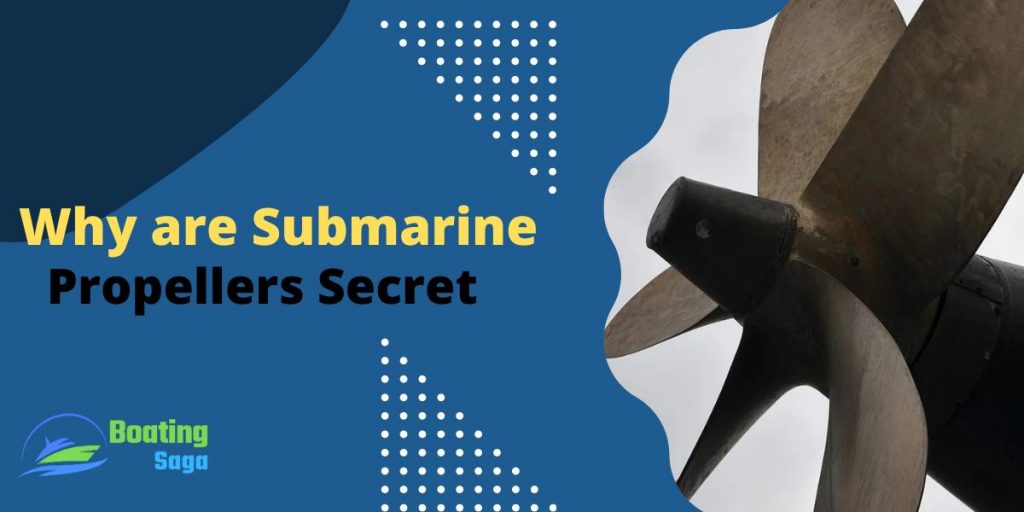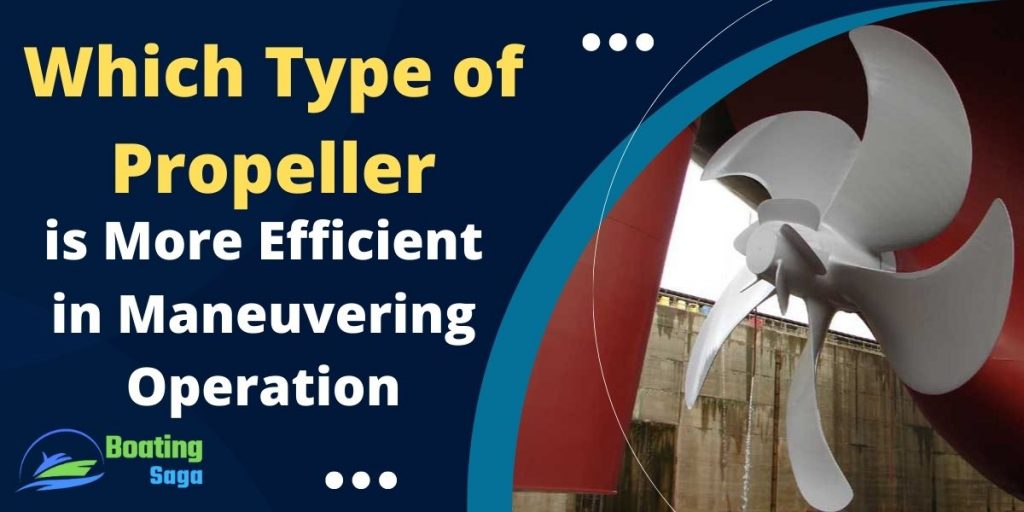
A propeller is a device used to convert the turning motion of a shaft into thrust. Propellers are commonly found in boats and ships, where they are used to move the vessel through the water.
Which type of propeller is more efficient in maneuvering operation?
In order to get the most out from a boat propeller, It has been found that a four blade controllable pitch propeller with a large diameter is more efficient in maneuvering operation. With a controllable propeller, the direction of thrust can be changed, allowing the boat to be turned more easily.
A controllable propeller can also help with reversing the boat. When reversing, it is often necessary to use forward thrust to get going in the opposite direction.
The Different Types of Boat Propellers and Their Uses
There are a variety of boat propellers on the market, and each has its own advantages and disadvantages. The three main types of boat propellers are the fixed-pitch propeller, the adjustable-pitch propeller, and the feathering or controllable-pitch propeller.
The fixed-pitch propeller is the simplest type of boat propeller. It has a single blade that is attached to the drive shaft of the engine, and it cannot be adjusted. This type of propeller is best used for boats that operate in calm waters, such as fishing boats or pleasure boats.
The adjustable-pitch propeller is more complex than the fixed-pitch propeller, but it offers more flexibility. The blade can be adjusted to change the pitch of the propeller, which allows for better performance in different water conditions.
A controllable-pitch boat propeller, or feathering propeller, is a type of marine propeller that can change the blade pitch, or degree of feathering, to optimize the boat’s speed and torque. Featherable propellers offer several advantages over traditional fixed-pitch propellers.
How to Measure Boat Propeller Efficiency?
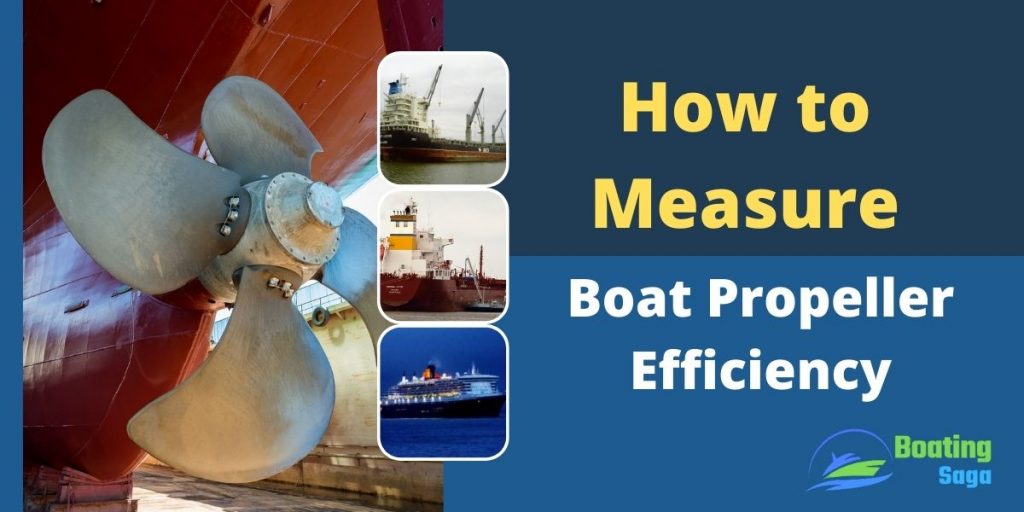
When it comes to boat propulsion, the propeller is one of the most important elements. But how do you know if your propeller is working as efficiently as possible? There are a few ways to measure propeller efficiency:
- One way is to measure the thrust and torque that the propeller is producing. This can be done using a dynamometer. By measuring these parameters, you can get a good idea of how much power the propeller is putting out.
- Another way to measure propeller efficiency is by looking at the water flow around the propeller. This can be done using a water velocity meter or an underwater camera. By analyzing the water flow, you can get an idea of how well the propeller is performing.
- Finally, you can also measure fuel consumption in order to calculate propulsion efficiency.
Factors Affecting Efficiency of a Boat Propeller
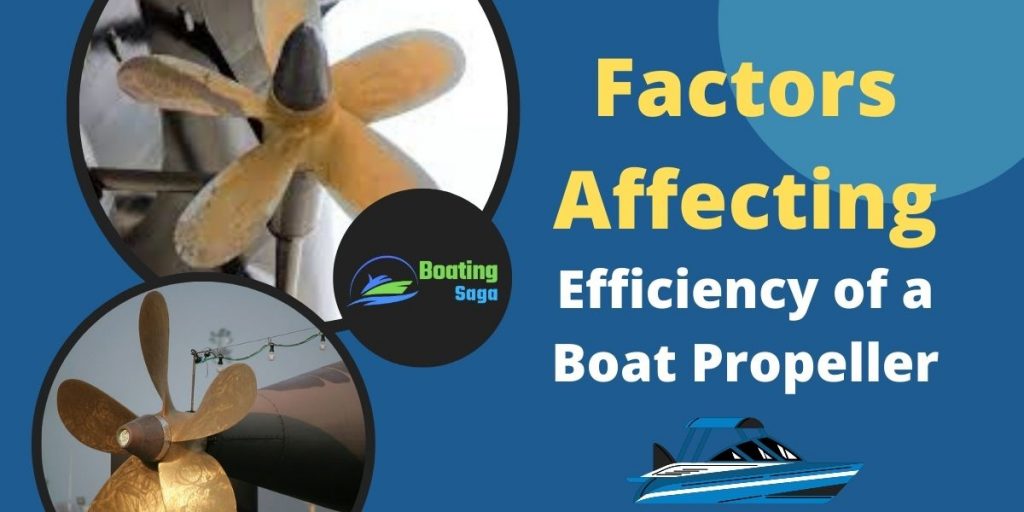
The efficiency of a boat propeller is affected by many factors. The shape and size of the propeller, the horsepower of the engine, the weight of the boat, and the speed of the boat are some of the most important factors.
- The shape and size of the propeller are important because they affect how much resistance it creates as it moves through the water. A larger propeller creates more resistance than a smaller one, and a more curved propeller creates more resistance than a less curved one.
- The horsepower of the engine is important because it affects how much power is available to move the boat. More horsepower means that the engine can produce more power to move the boat faster.
- A propeller’s efficiency is also affected by its pitch, which is the distance the propeller travels forward in one revolution. The higher the pitch, the more efficient the propeller will be. However, a higher pitch also means that the propeller will rotate more slowly.
- The weight of the boat is important because it affects how much drag force is created as the boat moves through the water. Heavier boats create more drag force than lighter boats.
- The number of blades on a propeller also affects its efficiency. A three-bladed propeller is more efficient than a two-bladed propeller, and a four-bladed propeller generally is more efficient than a three-bladed one.
- The condition of the propeller also affects its efficiency. Propellers can become worn down over time, which can reduce their performance. Additionally, if debris or fouling accumulates on the propeller blades, it can decrease their efficiency as well.
- Finally, the environment in which the propeller operates also has an impact on its efficiency. Factors such as water depth and temperature can affect how well the propeller moves through the water.
How to Improve Boat’s Efficiency With the Right Propeller?
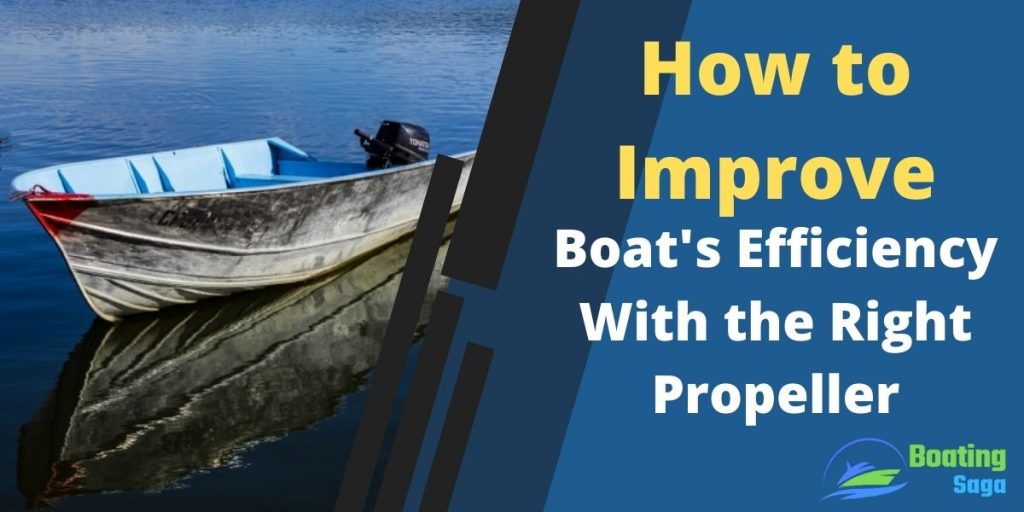
There are a few things to consider to improve the boat’s efficiency with the right propeller.
– The first is the size of the propeller. It is important to get the right size propeller for your boat in order to get the most efficiency from it.
– You also want to make sure that the propeller is the correct pitch for your boat. The pitch of a propeller is how far it will move forward in one revolution.
– You also need to consider the type of material the propeller is made out of. Some materials are more durable than others.
– The next thing you need to consider when purchasing a propeller for your boat is its design.
– You also need to take into account the type of water you plan to use your boat in – fresh or salt? There are different types of propellers designed for each type of water.
– You need to make sure that the propeller is compatible with your boat’s transmission type.
The best way to choose a propeller is to work with a knowledgeable salesperson who can help find the right one for the specific needs of the boat.
How to Maintain Your Propeller for Better Efficiency and Performance?
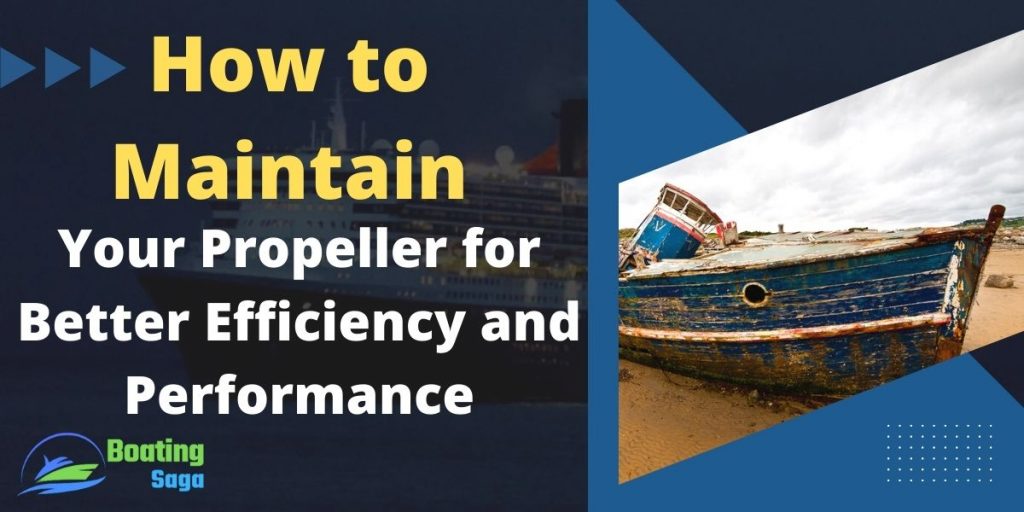
Your propeller is an essential component of your boat that plays a large role in its performance. To ensure your propeller is working as efficiently as possible and to prevent any potential damage, it is important to properly maintain it. Here are a few tips on how to do so:
1. Always keep an eye on the condition of your propeller and make sure there are no nicks or gouges in the blades. If there are, have them fixed by a professional as soon as possible.
2. Make sure the blades are properly balanced. An unbalanced propeller can lead to decreased efficiency and performance, and can also cause excessive wear and tear on the engine.
3. Keep the shaft and bearings well lubricated. A lack of lubrication can lead to excessive heat buildup and damage to the bearings.
4. Make sure the propeller is always clean. Use a soft brush or low-pressure hose to remove any dirt, salt, or other debris.
5. Keep the propeller shaft clean and free of rust or corrosion. Rust or corrosion can damage the shaft and affect the performance of the propeller.
6. Replace the propeller if it’s worn out. Over time, the blades will wear down and eventually need to be replaced.
7. Monitor your RPMs.
Frequently Asked Questions:
Do Asymmetrical Propellers Provide More Efficiency Than Symmetrical Ones?
There is a lot of debate surrounding the use of asymmetrical propellers. Some argue that they are more efficient than symmetrical ones, while others claim that there is no difference. The truth is, there is no definitive answer.
Generally speaking, asymmetrical propellers are little more efficient than symmetrical ones when it comes to providing thrust. However, they can be less efficient when it comes to turning the boat and depends on a number of factors, including the type of boat and the size and shape of the propeller.
In general, symmetrical propellers are better for boats that need to move quickly and efficiently in both directions. Asymmetrical propellers are better for boats that need to move more slowly or only in one direction.
How Many Blades of propeller are the Best for Tight Maneuvering?
When it comes to boat propellers, there are a lot of different options to choose from. But when it comes to tight maneuvering, how many blades is the best option?
Some people might think that more blades means better maneuverability, but that’s not always the case. In fact, too many blades can actually make things more difficult since they create more drag.
A four-bladed prop is generally considered the best option for tighter maneuvers. It provides good control and agility without creating too much drag.
Ultimately, it is important to experiment with different propeller configurations to find the best one for your boat and your needs.
Dual Prop Vs Jet Drive: Which is More Efficient?
When it comes to efficiency, there is no clear-cut answer as to which is better: a dual prop or jet drive. Both have their pros and cons, and it ultimately depends on the specific needs of the boat and the boater.
A dual prop boat is more efficient at low speeds, while a jet drive is more efficient at high speeds. Dual props are less expensive to maintain and repair than jet drives. Jet drives are more expensive to purchase, but last longer.
Ultimately, the choice between the two will come down to the specific needs of the boater.
Does Hydrofoil Increase the Boat’s Efficiency?
There is much discussion about the efficiency of a hydrofoil and if it actually increases the boat’s efficiency. There are many factors to consider when looking at this question. The type of boat, the size of the boat, and the speed at which the boat is traveling are all important factors to consider.
Some people believe that a hydrofoil can improve a boat’s speed and efficiency by up to 20 percent. However, there are other factors that need to be considered when looking at this number. The size of the boat and how heavily it is loaded will affect how much of an increase in speed and efficiency a hydrofoil can provide.
In addition, boats that are travelling at high speeds will experience more of an increase in speed and efficiency than those travelling at lower speeds.
So does hydrofoil increase the boat’s efficiency? The answer is yes – but only if it is used properly.
Conclusion
It seems that the four-bladed propeller is more efficient when it comes to maneuvering operations. However, four blade controllable pitch propeller is more efficient because it provides more thrust and consumes less fuel. The controllable pitch propeller is also more reliable because it can operate in a wider range of conditions.

